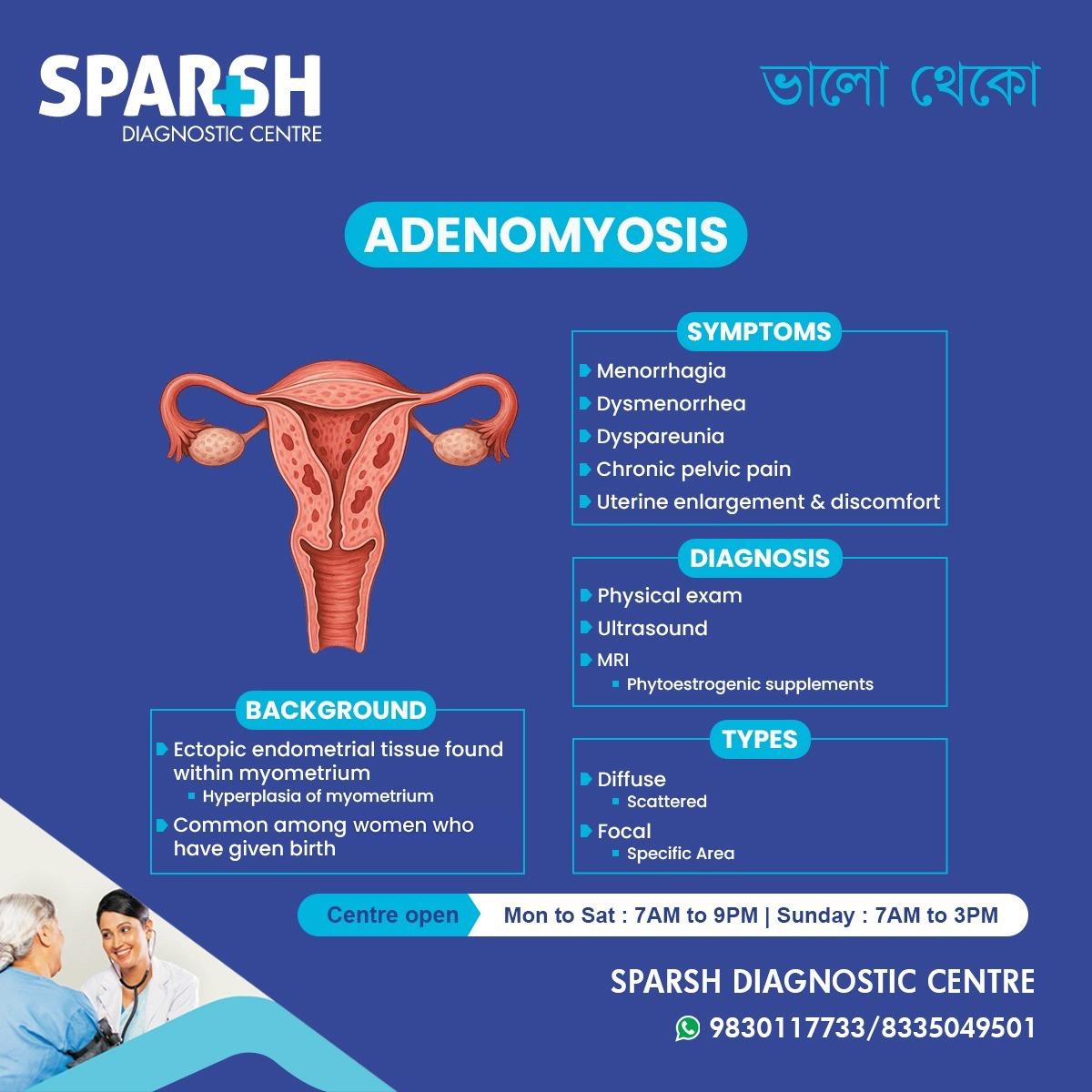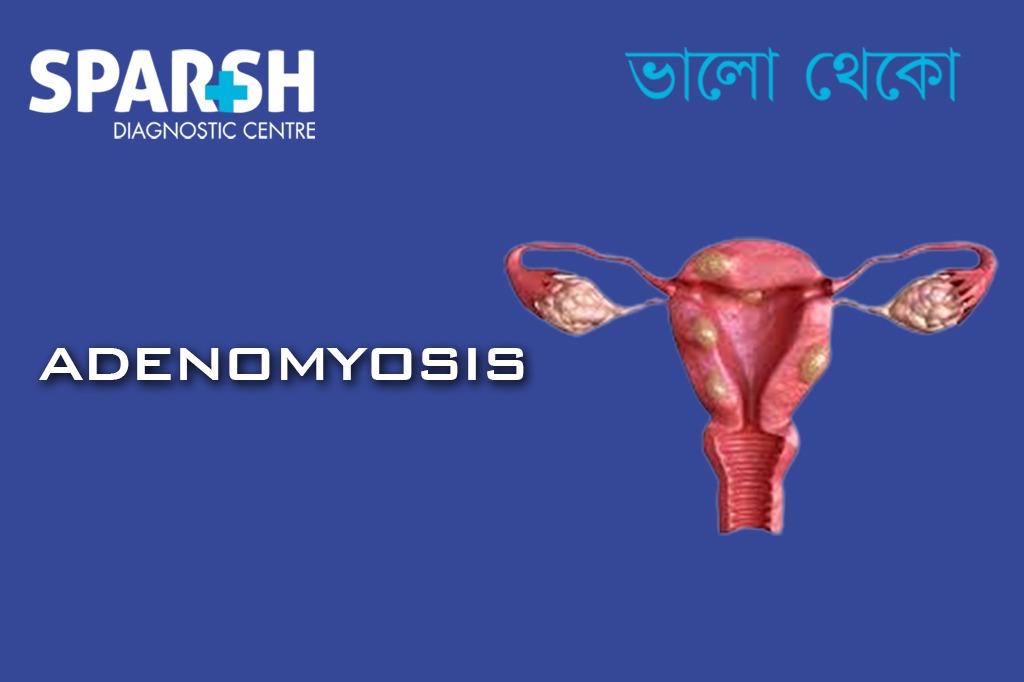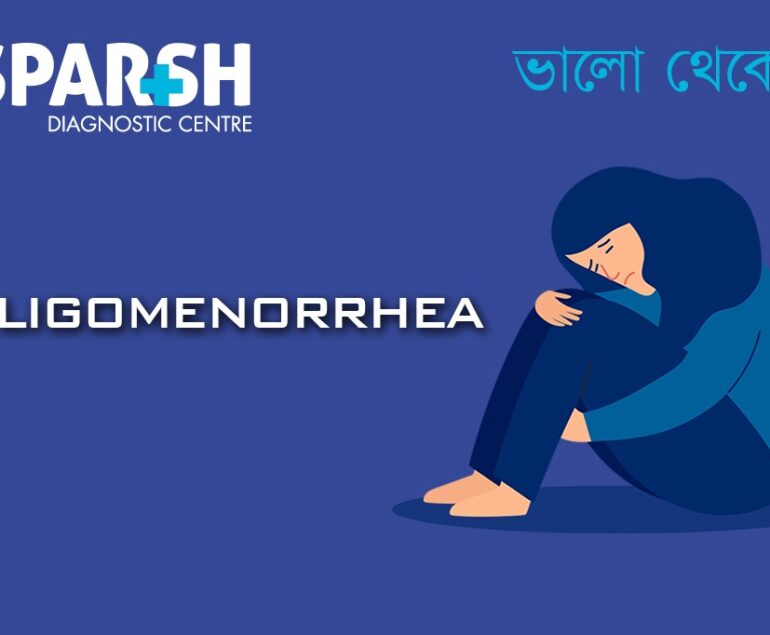Adenomyosis is a common gynecological disorder where the inner lining of the uterus (endometrium) grows into the muscle wall (myometrium). This misplaced tissue behaves like normal endometrium — thickening, breaking down, and bleeding during each menstrual cycle — but has no way to exit the uterus, resulting in pain, swelling, and heavy bleeding.
It most often affects women between the ages of 35 and 50, especially those who have given birth. While not life-threatening, adenomyosis can severely impact daily life due to chronic pelvic pain, prolonged menstruation, and discomfort.

Types of Adenomyosis
Adenomyosis can occur in two main forms:
Diffuse Adenomyosis – The abnormal tissue is spread throughout the uterus, causing uniform thickening.
Focal Adenomyosis (Adenomyoma) – The condition is localized to one area, forming a distinct lump, often mistaken for fibroids.
Causes and Risk Factors
Though the exact cause remains unclear, the following factors are believed to contribute:
Hormonal influence: Estrogen, progesterone, and prolactin play a key role in stimulating the growth of the endometrial tissue.
Uterine inflammation: After childbirth or surgery, inflammation may create openings for endometrial tissue to grow into the uterine wall.
Invasive growth: Endometrial cells may directly penetrate the muscle layer due to uterine injury.
Genetic and stem cell theories: Some studies suggest that adenomyosis could arise from bone marrow stem cells migrating to the uterus.
Who is at Risk?
You are more likely to develop adenomyosis if you:
Are between 35 and 50 years old
Have had multiple pregnancies
Have undergone uterine surgery (C-section or fibroid removal)
Have a history of endometriosis
Have elevated estrogen levels
Common Symptoms of Adenomyosis
The symptoms vary depending on the extent of tissue invasion. Common complaints include:
Pain during intercourse (Dyspareunia)
Chronic pelvic pain
Enlarged uterus or bloated abdomen
How is Adenomyosis Diagnosed?
Adenomyosis can be difficult to distinguish from fibroids or endometriosis, but modern imaging and laboratory techniques help with early detection.
1. Physical Examination
A gynecologist may detect an enlarged, tender uterus during a pelvic exam.
2. Ultrasound
A transvaginal ultrasound is often the first step to detect abnormal uterine thickening.
3. MRI Scan
MRI provides a clearer view of the uterine layers and helps differentiate adenomyosis from fibroids.
4. Histopathology
Definitive diagnosis is often made after hysterectomy, where the tissue is examined microscopically.
Treatment Options for Adenomyosis
Treatment depends on your age, symptom severity, and whether you plan to have children.
1. Medications
NSAIDs: To relieve pain and inflammation.
Hormonal therapy: Birth control pills, hormonal IUDs, and GnRH agonists help regulate menstruation.
Progestin therapy: Reduces endometrial growth and bleeding.
Phytoestrogenic supplements: Plant-based compounds that help balance hormones naturally.
2. Minimally Invasive Procedures
Uterine Artery Embolization (UAE): Cuts off blood supply to the affected tissue.
Endometrial Ablation: Destroys the uterine lining to reduce bleeding (not suitable if planning pregnancy).
Focused Ultrasound Surgery (FUS): A non-invasive, MRI-guided procedure that destroys the adenomyotic tissue using high-frequency sound waves.
3. Surgical Treatment
Adenomyomectomy: Removal of affected uterine tissue while preserving fertility.
Hysterectomy: Complete removal of the uterus—recommended in severe cases and for women who have completed childbearing.
Lifestyle and Home Remedies
While medical treatment is essential, lifestyle management helps ease symptoms:
Exercise regularly to improve blood flow and hormone balance
Use heating pads to relieve cramps
Manage stress with yoga or meditation
Follow an anti-inflammatory diet (leafy greens, berries, omega-3-rich foods)
Avoid caffeine, alcohol, and processed foods
Adenomyosis and Fertility
Adenomyosis can make conception more difficult by disrupting implantation. However, many women successfully conceive after treatment.
Fertility-preserving options like hormonal therapy or adenomyomectomy can help before exploring IVF or other assisted reproductive techniques.
Prognosis and Outlook
Most women experience relief from adenomyosis symptoms with proper treatment. The condition usually improves after menopause when estrogen levels drop naturally. Regular follow-ups and pelvic exams are crucial to monitor progress and prevent recurrence.
When to See a Doctor
You should visit your gynecologist if you experience:
Periods lasting longer than 7 days
Severe cramps not relieved by medication
Heavy bleeding with clots
Pain during intercourse
Persistent pelvic discomfort
Early detection helps prevent complications such as anemia and chronic pain.
FAQs About Adenomyosis
1. Is adenomyosis the same as endometriosis?
No. Adenomyosis involves endometrial tissue growing inside the uterine muscle, whereas endometriosis affects tissue outside the uterus.
2. Can adenomyosis go away on its own?
Symptoms often subside after menopause but may persist without treatment during reproductive years.
3. Can I get pregnant with adenomyosis?
Yes, though fertility may be affected. Consult your gynecologist for tailored treatment if you’re planning pregnancy.
4. How is adenomyosis different from fibroids?
Fibroids are muscular growths; adenomyosis is tissue infiltration into the uterine wall.
5. What diet helps with adenomyosis?
Anti-inflammatory foods such as fruits, vegetables, and omega-3-rich fish help reduce symptoms. Avoid processed foods and refined sugar.
6. Does adenomyosis increase cancer risk?
No, it is a benign condition and not associated with uterine cancer.
7. Can adenomyosis recur after treatment?
Yes, especially if hormone levels remain elevated or in younger women who have not reached menopause.
Adenomyosis may be a complex condition, but with modern diagnostics and individualized care, it can be effectively managed. Women experiencing heavy bleeding, pelvic pain, or menstrual discomfort should not ignore their symptoms.
At Sparsh Diagnostic Centre, our expert gynecologists and imaging specialists use advanced imaging technologies to diagnose adenomyosis accurately and guide treatment for long-term relief.
To consult a Gynecologist at Sparsh Diagnostic Centre for treatment of Uterine Fibroids, call our helpline number 9830117733.
#BhaloTheko
Disclaimer:
No content on this site, regardless of date, should ever be used as a substitute for direct medical advice from your doctor or other qualified clinician.

![]()






[…] Adenomyosis: The uterine lining grows into the muscle wall, causing pain and bleeding. […]